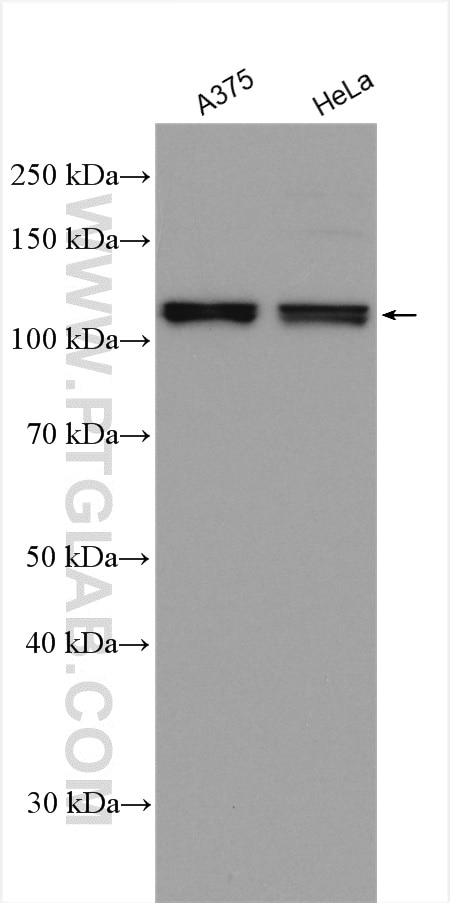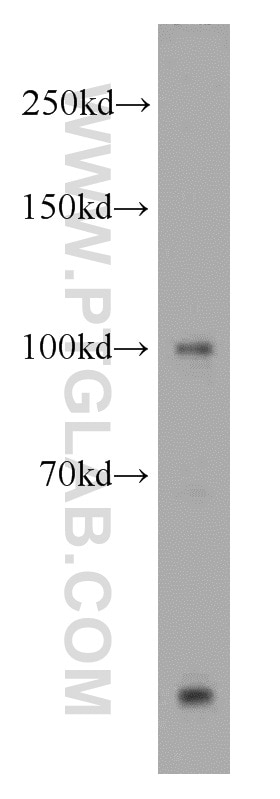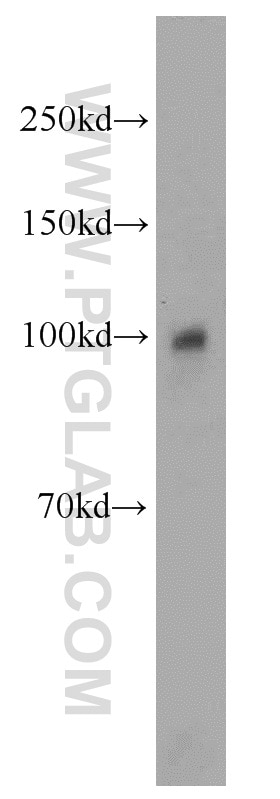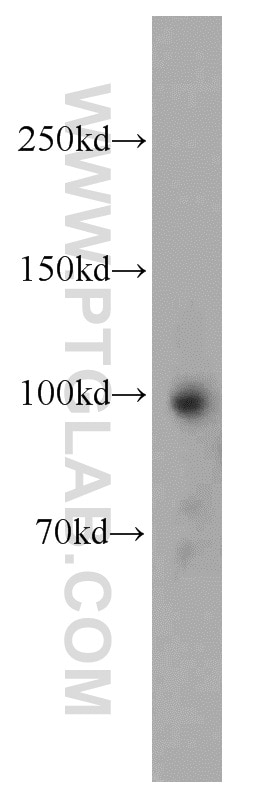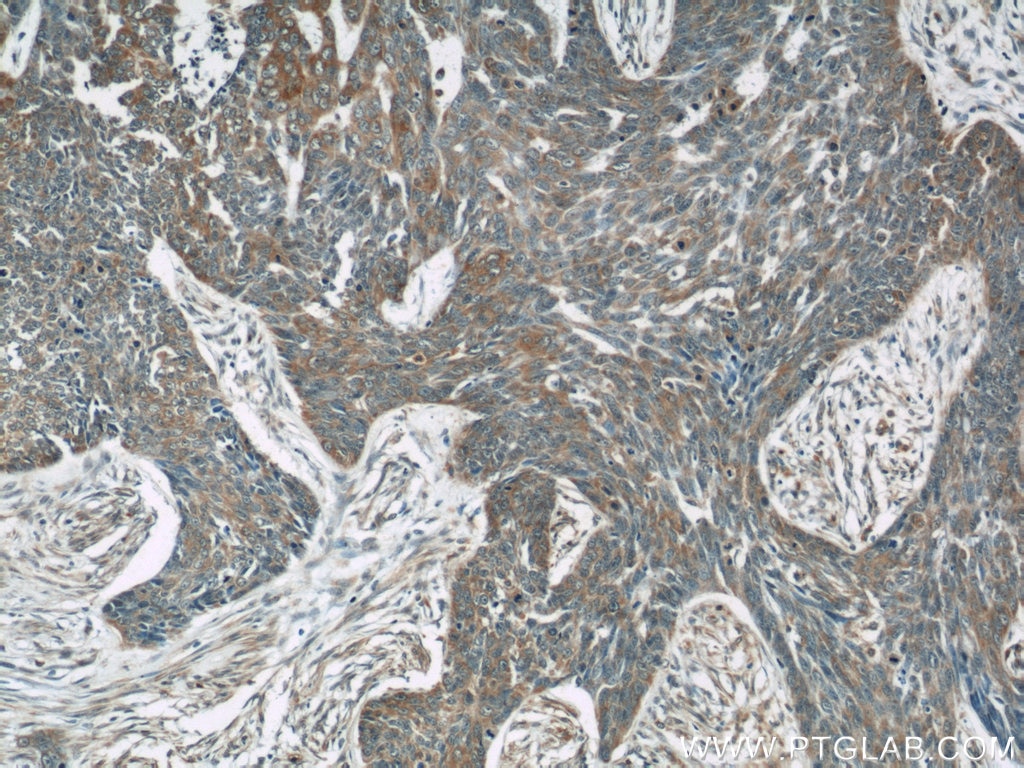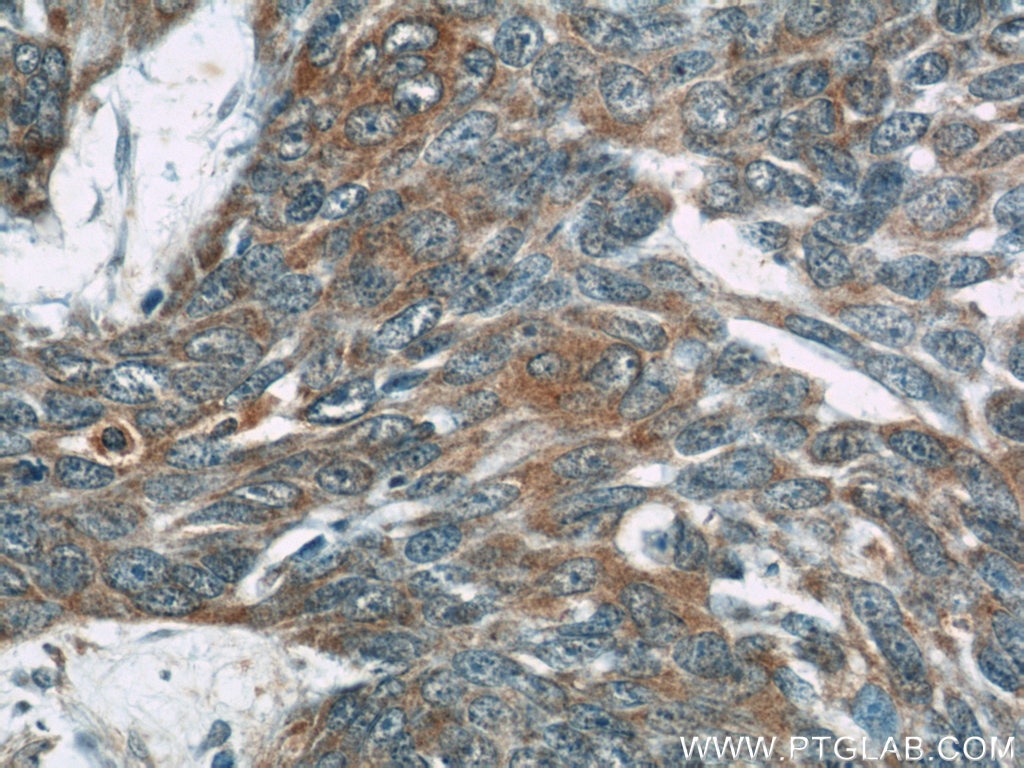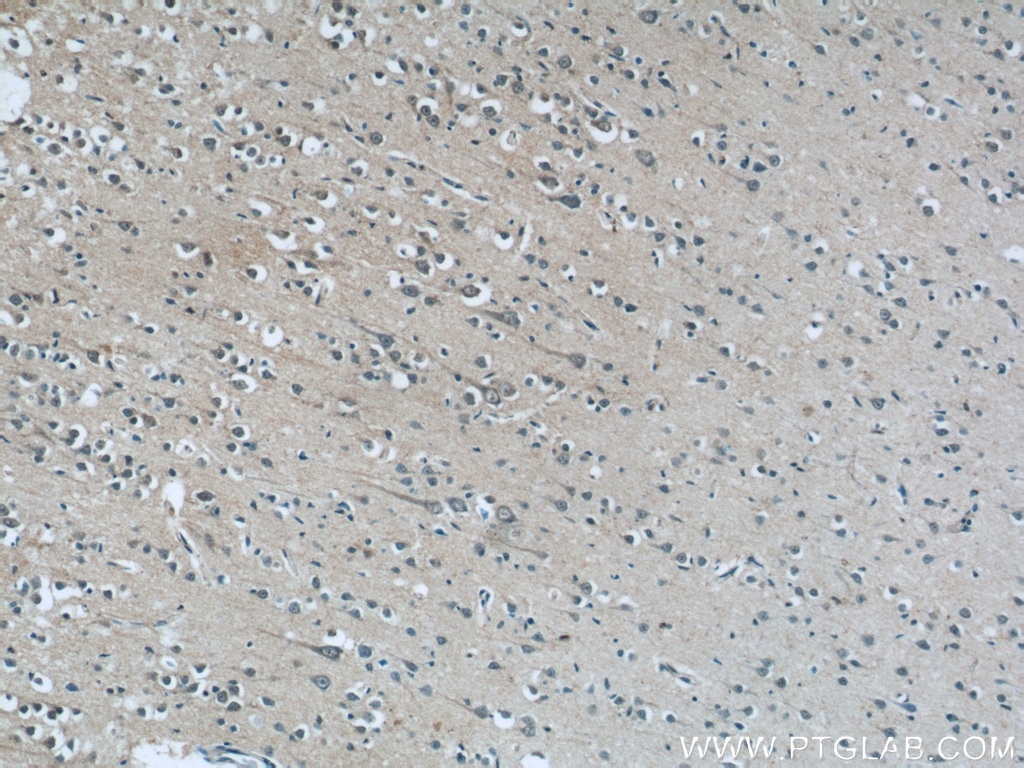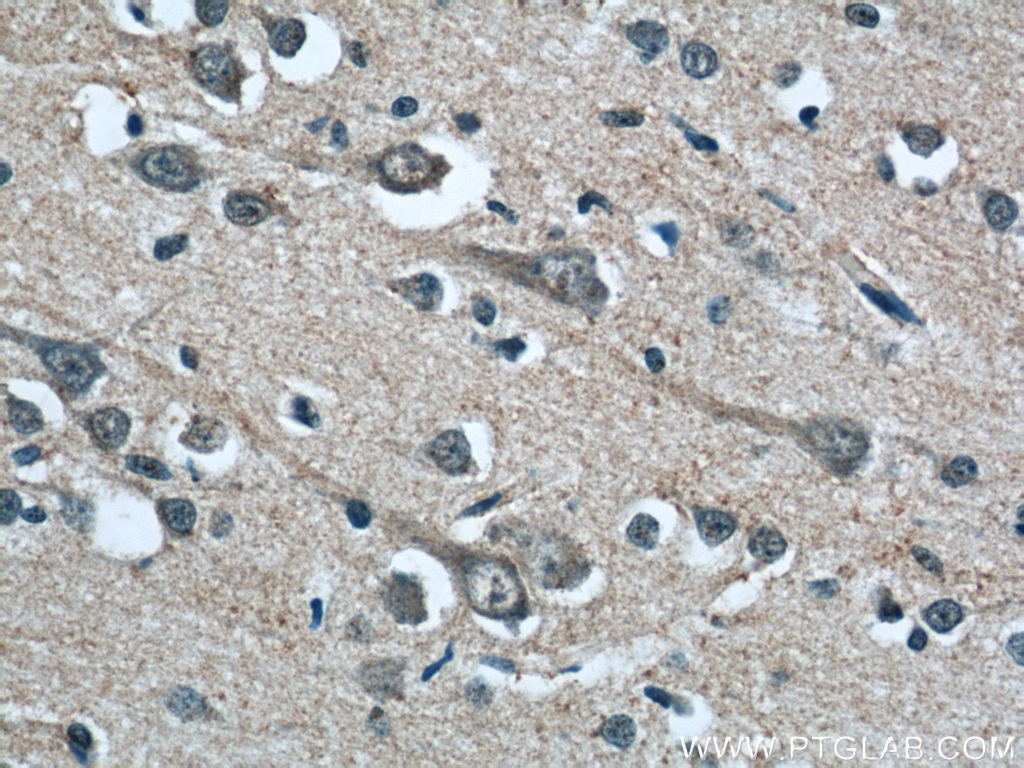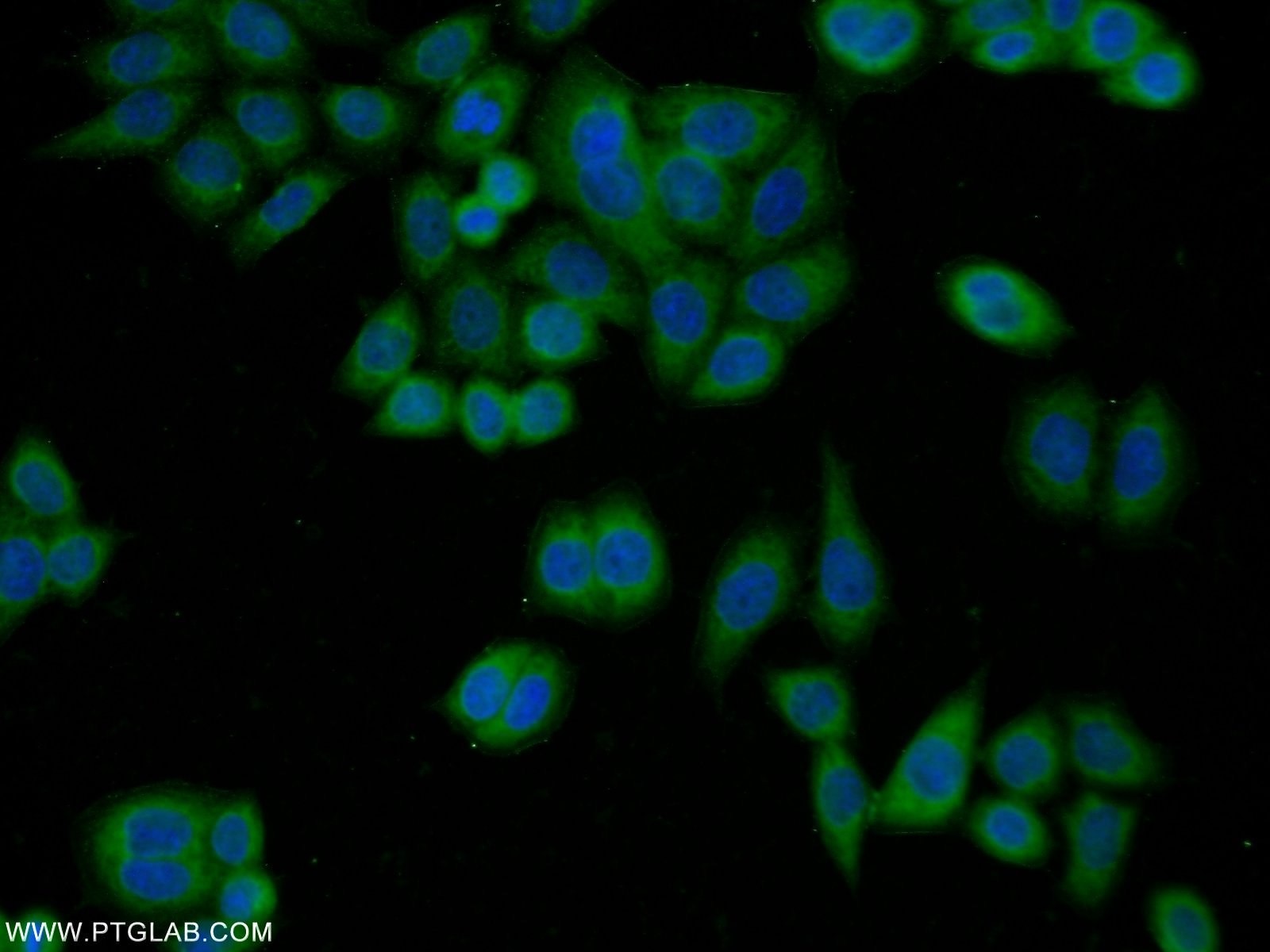- Phare
- Validé par KD/KO
Anticorps Polyclonal de lapin anti-OAS3
OAS3 Polyclonal Antibody for WB, IF, IHC, ELISA
Hôte / Isotype
Lapin / IgG
Réactivité testée
Humain et plus (1)
Applications
WB, IHC, IF/ICC, ELISA
Conjugaison
Non conjugué
N° de cat : 21915-1-AP
Synonymes
Galerie de données de validation
Applications testées
| Résultats positifs en WB | cellules A375, cellules HeLa, tissu placentaire humain |
| Résultats positifs en IHC | tissu de cancer de la peau humain, tissu cérébral humain il est suggéré de démasquer l'antigène avec un tampon de TE buffer pH 9.0; (*) À défaut, 'le démasquage de l'antigène peut être 'effectué avec un tampon citrate pH 6,0. |
| Résultats positifs en IF/ICC | cellules HeLa |
Dilution recommandée
| Application | Dilution |
|---|---|
| Western Blot (WB) | WB : 1:1000-1:4000 |
| Immunohistochimie (IHC) | IHC : 1:20-1:200 |
| Immunofluorescence (IF)/ICC | IF/ICC : 1:20-1:200 |
| It is recommended that this reagent should be titrated in each testing system to obtain optimal results. | |
| Sample-dependent, check data in validation data gallery | |
Applications publiées
| KD/KO | See 3 publications below |
| WB | See 10 publications below |
| IHC | See 2 publications below |
Informations sur le produit
21915-1-AP cible OAS3 dans les applications de WB, IHC, IF/ICC, ELISA et montre une réactivité avec des échantillons Humain
| Réactivité | Humain |
| Réactivité citée | Humain, souris |
| Hôte / Isotype | Lapin / IgG |
| Clonalité | Polyclonal |
| Type | Anticorps |
| Immunogène | OAS3 Protéine recombinante Ag16150 |
| Nom complet | 2'-5'-oligoadenylate synthetase 3, 100kDa |
| Masse moléculaire calculée | 1087 aa, 121 kDa |
| Poids moléculaire observé | 100-120 kDa |
| Numéro d’acquisition GenBank | BC113746 |
| Symbole du gène | OAS3 |
| Identification du gène (NCBI) | 4940 |
| Conjugaison | Non conjugué |
| Forme | Liquide |
| Méthode de purification | Purification par affinité contre l'antigène |
| Tampon de stockage | PBS avec azoture de sodium à 0,02 % et glycérol à 50 % pH 7,3 |
| Conditions de stockage | Stocker à -20°C. Stable pendant un an après l'expédition. L'aliquotage n'est pas nécessaire pour le stockage à -20oC Les 20ul contiennent 0,1% de BSA. |
Informations générales
The 2-prime,5-prime oligoadenylate synthetases (OASs), such as OAS3, are interferon-induced proteins characterized by their capacity to catalyze the synthesis of 2-prime,5-prime oligomers of adenosine (2-5As). It is also named as p100 OAS and belongs to the 2-5A synthase family. OAS3 is involved in inhibition of cellular protein synthesis and in viral infection resistance. This antibody may have weak cross-reaction with OAS1 protein due to the highly homology.
Protocole
| Product Specific Protocols | |
|---|---|
| WB protocol for OAS3 antibody 21915-1-AP | Download protocol |
| IHC protocol for OAS3 antibody 21915-1-AP | Download protocol |
| IF protocol for OAS3 antibody 21915-1-AP | Download protocol |
| Standard Protocols | |
|---|---|
| Click here to view our Standard Protocols |
Publications
| Species | Application | Title |
|---|---|---|
Nat Cell Biol Redox regulation of m6A methyltransferase METTL3 in β-cells controls the innate immune response in type 1 diabetes | ||
Nat Commun Large-scale and high-resolution mass spectrometry-based proteomics profiling defines molecular subtypes of esophageal cancer for therapeutic targeting. | ||
J Invest Dermatol OAS1, OAS2, and OAS3 Contribute to Epidermal Keratinocyte Proliferation by Regulating Cell Cycle and Augment Type I Interferon-Induced JAK1-STAT1 Phosphorylation in Psoriasis.
| ||
Virol Sin EV71 3C protease cleaves host anti-viral factor OAS3 and enhances virus replication.
| ||
